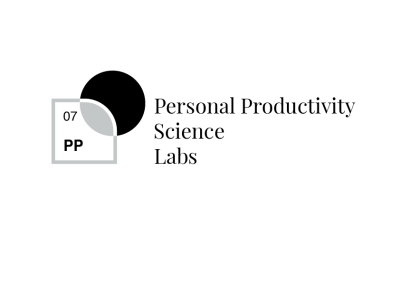Why is it so difficult to focus? Remember when you’d begin your day with a clear plan, only to be distracted? Maybe your phone vibrates before you start on something, one scroll leads to another, and after 30 minutes, you realize you’ve lost track of time.
You eventually sit down to work, only to be disoriented by an influx of emails. Meanwhile, your untidy desk and the hustling street outside keep you distracted. By the end of the day, you feel exhausted but unaccomplished.
Does this sound familiar? You are not alone. Distractions abound in today’s hyper-connected society, making it tough to concentrate and remain productive. This article will explore ways to assist people like you in cutting through the noise, restoring focus, and accomplishing more.
Do you want to get things done? Learn how to hone your focus below!
Why focus is challenging
Focus is more than willpower; it is a mental juggling act. The brain has a limited capacity to manage numerous things simultaneously. When you try to accomplish everything at once, you risk overloading your cognitive capacities, which can decrease your productivity.
These distractions can be divided into three major areas of interference:
Digital distractions in the modern world
Digital devices are a double-edged sword.
On the one hand, they provide access to knowledge and productivity tools; on the other, they continually demand attention. A study indicates that even minor disruptions, such as a text notification, lessen task performance.
Frequent disruptions, such as social media alerts and email notifications, disrupt attention and significantly impact cognitive performance while increasing stress levels. Each hurdle takes you further from deep concentration, leaving you psychologically fatigued and unable to restore momentum throughout the day.
Environmental disruptions
Aside from digital distractions, environmental factors such as noisy workplaces or disorganized desks also impact focus. For example, did you know that noise reduces cognitive performance by between 2.4% and 5.8%? That’s a big deal if you truly want to focus.
Furthermore, environmental stressors indirectly impact job performance by lowering state variables such as motivation, energy levels, and focus, which are necessary for maintaining high-functioning work performance.
Internal mental state
Internal tension and exhaustion exacerbate your distractedness.
When stress or fatigue consumes one’s mental bandwidth, it becomes more challenging to concentrate on complex tasks. Research in cognitive psychology shows that multitasking in these situations disrupts focus, leading to increased task mistakes and slower work completion rates.
There are many culprits behind poor focus. But don’t worry, you’re not entirely hopeless. The next step is to explore staying focused, regaining control, and enhancing your productivity.
Learn how to focus with these techniques
Mastering focus isn’t a one-size-fits-all solution; it needs personalized approaches that are effective for you. The good news? Various techniques exist that can do exactly that.
Besides mastering focus, these approaches allow you to do tasks more efficiently and easily. Look at some tried-and-true tactics below to regain control of your focus, reduce distractions, and be productive.
Set clear goals and systems
Having defined goals and objectives ensures that your work is purposeful. Breaking down tasks into manageable portions allows you to focus on one item at a time without becoming overwhelmed.
Consider the following techniques to learn clear goal setting:
- Break tasks into smaller steps. Major tasks can be intimidating, so break them down into smaller, more manageable steps. Instead of saying, “write a report,” divide it into steps like research, drafting, and editing.
- Use prioritization techniques. The Eisenhower Matrix is a task management tool that helps you organize and prioritize tasks by urgency and importance. Start with high-priority tasks to enhance productivity.
- Set clear deadlines. Set timelines for each work, even the smallest tasks. For example, “complete research by 11 a.m.” helps you stay focused and on track.
- Try time-blocking or Pomodoro. To assign time to each activity, use techniques such as Pomodoro (25 minutes of work, 5 minutes of rest) or time-blocking.
Read more: Goal-Setting: Why You Should Set Goals
Create a distraction-free workspace
Distractions in your environment might make it hard to focus. From endless phone notifications to domestic noise, these disruptions divert your concentration from important tasks.
A distraction-free environment is essential for staying focused. You may remain attentive to your task by organizing your environment and setting boundaries as follows:
- Declutter your workspace. Keep only the essentials on your desk: your computer, notepad, and any tools you use. A clean environment might help you cleanse your mind.
- Use noise-canceling headphones. If you work in a busy environment, these headphones can help you avoid distractions and stay focused.
- Set boundaries with others. Communicate your need for uninterrupted time with others around you, whether they are coworkers or relatives. A simple “Do Not Disturb” sign is effective.
Creating a workspace that reduces these distractions helps a lot. Handling environmental distractions is simple. You don’t have to spend a lot or make big changes to your life. Just try out the tips above.
Leverage productivity apps
Sometimes, you only need the right tool to stay focused, manage activities, and avoid distractions. Thanks to technology, many tools provide structure and responsibility, allowing you to focus more.
According to research, gamified tools can improve focus and engagement, making jobs less tedious.
Master focus by leveraging the productivity apps and tools in the following manner:
- Use focus-boosting apps. Forest and Focus@Will can help you stay focused by encouraging uninterrupted work time. Forest grows a tree while you work, while Focus@Will plays music that improves attention.
- Track your tasks. Use task management applications such as Todoist or Trello to organize your work and monitor your progress. These applications keep your duties organized and provide satisfaction as you cross them off.
- Set social media limits. To avoid the temptation of social media, use apps like StayFocusd to block access or limit time spent on certain sites during work hours.
- Use timers for focus. Combine productivity apps with timers like Pomodoro to work in intervals. Set your timer for focused work sessions and take breaks to recharge.
Build a routine for consistency
Consistency breeds productivity. Establishing a daily routine helps you create habits that promote focus, making it easier to get into the zone every day.
- Set a regular start time. Begin each workday at the same time. A consistent start time helps condition your brain for productivity.
- Establish morning rituals. Morning routines, such as meditation, exercise, or having a good breakfast, set a positive tone for the day.
- End with reflection. At the end of the day, spend a few minutes reflecting on what worked well and what didn’t. This can help you improve your routine for the next day.
Read more: Start Your Day Right: Morning Routine Ideas for Staying Alert
Practice mindfulness and meditation
Mindfulness and meditation are extremely effective strategies for increasing focus. They help reduce stress, cleanse mental clutter, and train your brain to focus on activities.
Begin with brief, 5- to 10-minute mindfulness practices focusing on your breathing. This will help you concentrate yourself and improve your attention span over time.
- Use guided meditation apps. Apps such as Calm or Headspace offer guided sessions that walk users through mindfulness activities, helping them stay calm and focused.
- Take mindful breaks. Take a 5-minute pause at work to practice mindfulness by closing your eyes, breathing deeply, and resetting your mind.
- Be present. When working, strive to concentrate entirely on the task at hand. If you become sidetracked, gently return your focus to the task without judgment. Mindfulness increases concentration and decreases multitasking.
Read more: Reaching a Higher Sense of Self Through Mindfulness
In conclusion
Remember how you’d always be distracted at the start of your day — starting with a clear plan but falling prey to endless distractions?
Now that you know everything, imagine reclaiming that lost time, staying focused on your priorities, and ending the day feeling accomplished.
You can overcome distractions by setting clear goals, organizing your workspace, leveraging productivity, establishing routines, and practicing mindfulness. The key is consistency — small, actionable measures produce great benefits.
Start with small, actionable steps today. Cultivate your focus, and you’ll quickly become a productive powerhouse.
If you would like to see more resources on distractions, check out the Personal Productivity Science Labs. The lab uses the research of the Institute for Life Management Science to produce courses, certifications, podcasts, videos, and other tools. Visit the Personal Productivity Science Labs today.
Photo by Freepik



